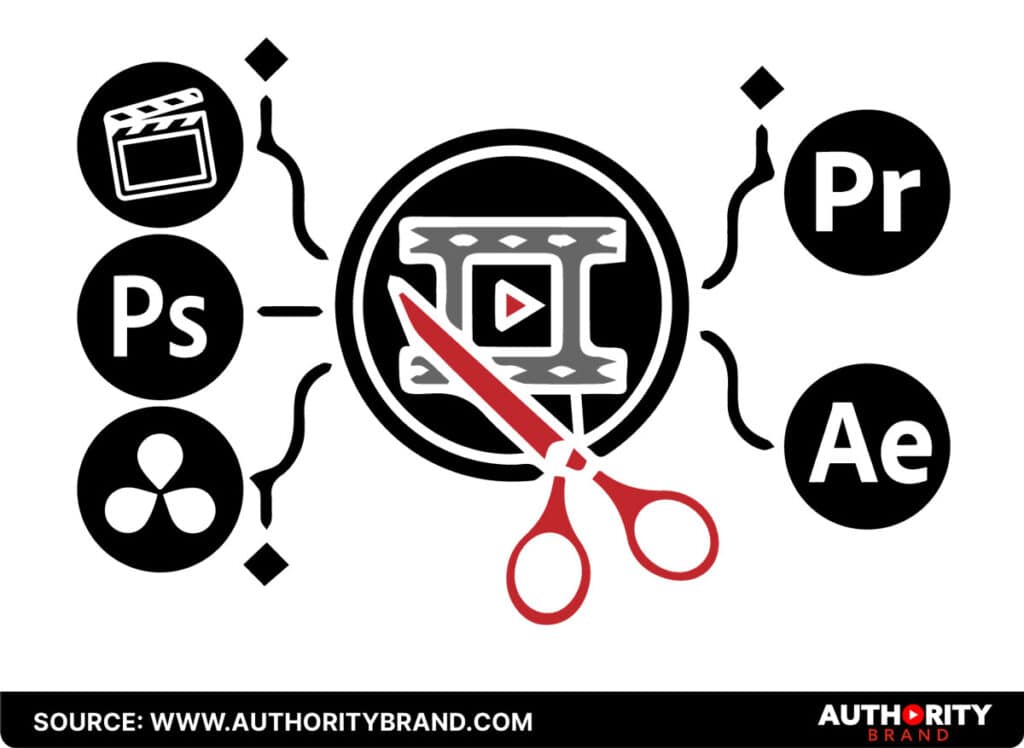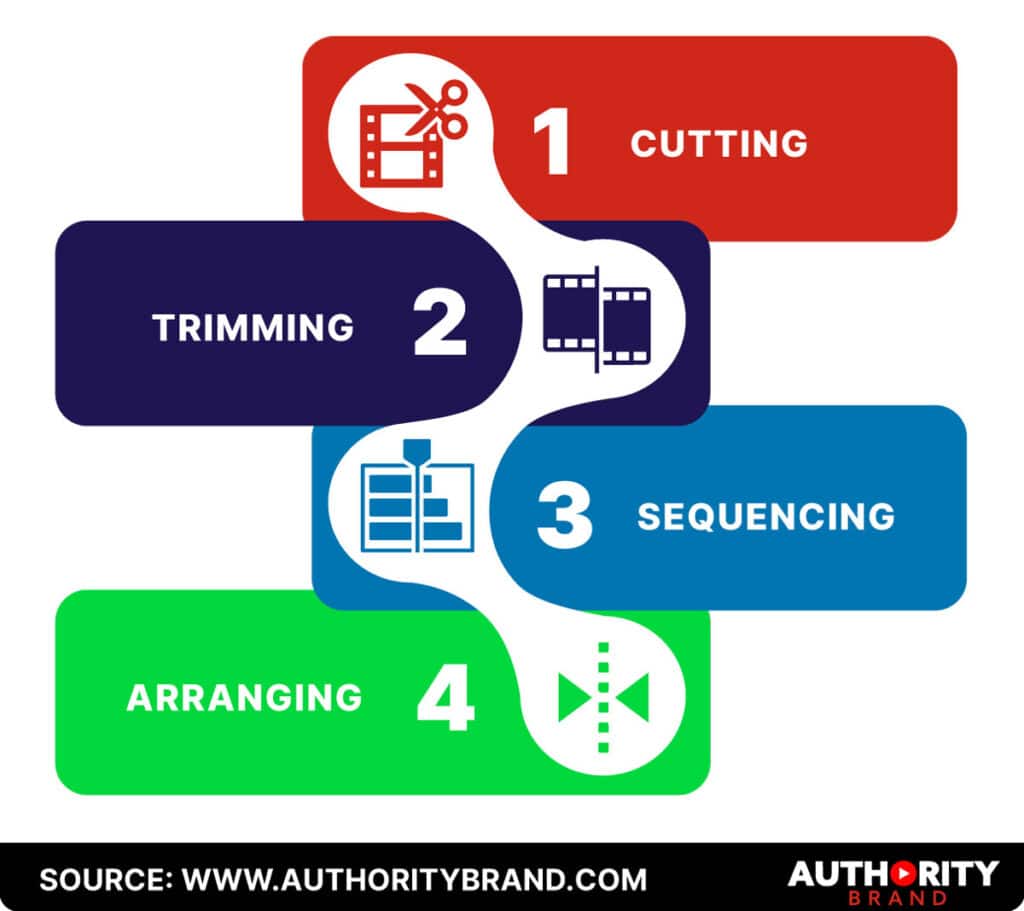Video Editing
Essentials of Video Editing:
Techniques to Transform Your Content

Video editing is the enchanting process of transforming raw footage into a mesmerizing story that captures viewers’ imaginations. It’s an art form that involves more than just assembling clips. The alchemy turns a mere idea into a finished product, transforming a collection of images into a breathtaking visual experience.
Video editing is like a magician’s wand that enhances the visual experience. It turns unrefined footage into a polished, cohesive story that captivates and connects with viewers. In today’s fast-paced digital world, editing skills and precision are essential for maintaining audience interest and effectively conveying messages.
Furthermore, expert video editing can significantly impact viewer engagement and enhance visual appeal. A well-edited video keeps the audience engaged and guides them smoothly through a story or message. It employs rhythm, pacing, and storytelling techniques to elicit emotions, provoke reactions, and leave a lasting impression.
Ultimately, video editing is about creating an immersive experience that transports viewers to another world and leaves a lasting impression long after the video has ended. Mastering the technical aspects while weaving a story that touches the audience.
At Authority Brand, we believe in the power of the ANSWER framework and direct response principles to make a difference in business. Our social media marketing tactics are designed to bring out the best in your brand and inspire your target audience to become loyal customers of your vision. With our customized approach, we can help you elevate your online presence and turn your followers into devoted customers. Let us show you the way to new heights of success and make your brand stand out.
1. Understanding Video Editing
The Basics of Video Editing

Video editing is the art of modifying and arranging footage to create a captivating story or convey a message. The primary objective of video editing is to transform raw footage into a polished and well-produced video content piece that effectively evokes emotions in the viewer and is aesthetically pleasing. Editing videos involves more than just putting clips together; it entails creating a compelling narrative, managing timing, and enhancing the overall aesthetic appeal.
The video editing process is divided into three stages. Firstly, the creative vision is developed during the pre-production stage, resources are organized, and video content planning is done. This includes planning the shoot, storyboarding, selecting shooting locations, and writing the script. Secondly, the footage is captured during the production stage per the pre-planned vision. This comprises filming scenes, taking shots from various angles, and recording audio. Lastly, during the post-production stage, the real magic happens. It includes ingesting unprocessed video to a computer for editing, arranging the clips in order, making necessary adjustments, and adding graphics, effects, and transitions to create a cohesive story. Color correction and grading also change hues and tones to produce a visually appealing and unified look. Audio editing involves adding music, sound effects, voiceovers, and enhancements. Finally, the edited video is put in its final form and distributed
2. Getting Started with Video Editing
Essential Tools and Software for Video Editing

There are multiple video editing software options available to choose from. Adobe Premiere Pro is known for its adaptability, numerous editing tools, effects, and integration with other Adobe products like Photoshop and After Effects.
Final Cut Pro is popular among Mac users due to its user-friendly interface, robust editing features, and seamless interaction with Apple’s ecosystem.
DaVinci Resolve is famous for its powerful color correction tools, which combine visual effects, audio post-production, color grading, and professional editing into a single package.
While hardware requirements can vary based on the complexity of the software and project, a reasonable configuration for video editing includes a computer with a powerful processor, ample RAM, and a dedicated graphics card for smoother editing. Quick external drives or high-capacity SSDs are recommended for storing and organizing large video files. Additionally, a sharp, high-definition monitor is essential for precise color grading and intricate editing.
Setting Up Your Editing Workspace

To ensure a smooth and efficient video editing process, organizing your files in a structured manner is essential. Create folders for exports, project files, assets, and raw footage to locate necessary elements and quickly speed up editing.
Additionally, customize the user interface of your editing program to suit your needs. Arrange timelines, panels, and toolkits in a way that optimizes productivity and provides quick access to frequently used features.
You can focus more on your creative work and enjoy a productive editing session by effectively managing your files and organizing your workspace.
3. Key Video Editing Techniques
Fundamental Editing Techniques

When it comes to editing videos, there are some essential methods that you should know. Firstly, there’s cutting, which involves removing unneeded scenes or portions from the film to improve the story or correct mistakes. Secondly, trimming involves changing a clip’s in and out points to remove extraneous material and maintain a smooth flow. Thirdly, there’s sequencing, which consists of arranging video clips logically to tell a story or convey a point, and lastly, arranging involves putting clips in the correct visual and temporal order to achieve the right pacing and rhythm. By using these methods effectively, you can create a well-edited and engaging video.
Enhancing Videos with Effects and Transitions

If you want to improve your videos, using transitions and effects effectively is essential. Cut transitions are an excellent option for keeping things moving quickly or continuously, while dissolves and fades can gently blend one clip into another. You can also use color grading, effects, and filters to enhance the video’s mood and aesthetic appeal.
In addition to transitions and effects, you can include other elements in your videos to make them more engaging. For instance, add text overlays to convey information or highlight important details. Also, you can use different effects, such as sharpening, blurring, or artistic filters, to create a specific mood and change the overall look of the video. Using these techniques, you can make your videos more exciting and visually appealing, keeping your audience engaged.
4. Advanced Video Editing Tips
Color Correction and Grading

Color correction is a process that involves adjusting the saturation, exposure, contrast, and white balance to give a video a well-balanced and natural appearance. This stage aims to fix any technical issues with the colors and ensure consistency throughout the video. On the other hand, color grading goes beyond simple color correction and involves enhancing or stylizing the images to create a specific mood or atmosphere. Creative color adjustments are used to achieve a desired cinematic or artistic look.
Audio Editing in Videos

Matching audio and visuals refers to synchronizing external audio sources, such as recorded speech or sound effects, with the visuals to ensure precise pacing and consistency. Additionally, including background music in a video can enhance its emotional impact, pacing, and mood. For a more engaging watching experience, sound effects can be added to accentuate actions, transitions, or ambiance. This enhances the auditory experience and makes the video more interesting.
Conclusion: Mastering the Art: Unveiling the Power of Video Editing in Storytelling
Video editing is the magic wand that brings life to your content. Transforming raw footage into captivating stories that resonate with the audience is an art. Video editing is not just about arranging clips in a sequence but about creating a masterpiece that leaves a lasting impression on viewers.
To master video editing, you need to practice and experiment with different techniques. Embrace your creativity and explore new possibilities using the tools and resources available. Every project is an opportunity to refine your abilities, challenge your limits, and take your skills to the next level.
Remember, video editing is a skill, a journey of self-discovery and innovation. So, let your imagination run wild, experiment with new ideas, and use video editing as a canvas to express your voice and tell compelling stories that touch people’s hearts.
Transform Your Ad Campaigns
Discover the fastest and easiest way to effortlessly triple your ad profits using Trust Scaling.
